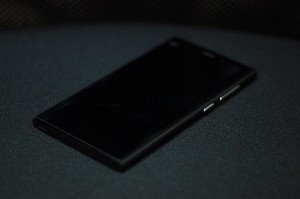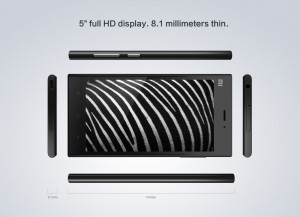Chinese phone manufacturer Xiaomi has released its first phone in India. Xiaomi made its name in the global scene from its home market, China. The company, initially making its own custom ROMs (MIUI) for Android devices, entered the highly competitive world of hardware with its Mi range of smartphones. After a few iterations, the company unveiled Mi3, Xiaomi’s latest flagship device, packing top end specifications, but at a very low price unmatched by the competition. This is all thanks to Xiaomi’s business model where it sells to its consumers directly, without the overhead of a distribution channel on the price. After hiring Android VP Hugo Barra, the company recently took its operations to other countries like Singapore and Malaysia, where it saw success, and is finally here in India, where its flagship Mi3 will go on sale the 15th of July, at a shockingly low price of Rs. 14,999. Even just by looking at the on-paper specifications, one can say it is already worth it. In fact, it could even be perceived as undervalued.
Design
The design of the Xiaomi Mi3 is quite apparent if you are a fan of Nokia devices, but even if you aren’t, you’ll know, because it looks like a flatter Nokia N9 without a curved screen. This is easiest way to describe the Mi3′s design, but we think it’s not a bad thing at all. The flat ends of the top and bottom and the curved sides are elements from the Nokia Fabula design language, but without the pillow-y back. Even the speaker holes, which are laser drilled, mirror the N9 look, perhaps slightly more refined. But unlike the N9, with a flat front and back, the device doesn’t really look like a single piece, as the display sits on a slightly elevated frame. This adds a small amount of gloss to an otherwise minimalistic matte phone. The back is where you feel that this is a completely different device as the camera placement and the logo lend some differentiation. The Mi3 might look like the N9, but it has its own differentiation and better attention to detail, like for example, the perfectly machined USB slot.
The dimensions of this 5″ phone are very similar to many 5″ phones, especially the ones from Oppo and Sony, as the Mi3 too, is tall. At 144mm, the height of the phone will be a slight annoyance for people with smaller hands, but the 16:9 form factor makes the device narrow enough (73.6mm) for easy operation in a single hand, and the thickness helps too (8.1mm). The plastic material on the sides and the back is smooth, so it is obviously slippery to some extent. Adding to the slip factor is the easily smudged material that requires incessant cleaning sometimes. You might not need a case on the device, but we’d suggest you get one just in case. Weighing a light 145g, the weight distribution of the phone is linear and equal, so you would not want to worry about it toppling over. Let’s take a walkthrough of the hardware now.
Display
The Mi3, as mentioned earlier, has a 5 inch full HD resolution screen of the IPS LCD type. It is closely bonded to the touchscreen, so it is geared to provide better contrast for a LCD with deeper blacks than usual, which is true. But since the UI is mostly white, we don’t see much of a difference anyway. That aside, the PPI count stands at 441 and interestingly, Xiaomi notes that this is a “retina” display manufactured either by Sharp or LG, which is very similar to what Apple says and does. In actual use, the display is great. It has great colours, good brightness with addition control through CABC (content adaptive brightness control) and the viewing angles are very good too. The touchscreen feedback is also notably good, which is possibly due to the coating on the screen.
Overall, the 16:9 display is great for watching movies, playing games and even reading, thanks to the resolution, and it will easily be the only device in its price range to sport such a great screen. The price factor makes the display so much better, we’d say. On the software side of things, the phone comes with a glove mode that can be enabled in the settings, for higher sensitivity and there is even a setting that lets you control the white balance of the screen, like LG devices.
Camera
The Xiaomi Mi3 comes with top end specifications, so the camera had to be at least 13 megapixels, which it is, with a f2.2 aperture lens over it. Flanked by a dual LED flash unit and a secondary microphone, the camera takes pleasing pictures in normal daylight conditions. Powered by the MIUI interface, the camera operation is easy enough for newbies but there are a lot of options for professionals and enthusiasts too, who want to tinker with the settings. For example, one can take a photograph with light trails thanks to the manual shutter speed control, and for the adventurous, there is even custom controls for white balance in K values and manual ISO upto 3200.

Performance
MI-3 has a quad core Qualcomm Snapdrogon 2.3 ghz proccessor with a adreno 330 GPU.It has a 3050mAh battery.MI-3 has 2 gigs of ram with 16 GB internal storage. The most plegurefull is that it has a full HD IPS Retina display which is not in phones which are double to its price. It will come with android 4.3 and has NFC.
Remark
I don’t think any thing is lift to sya. This is phone is the Game Changer and will be the grwat budget phone.The only drawback is service centers.
Rating: 10




